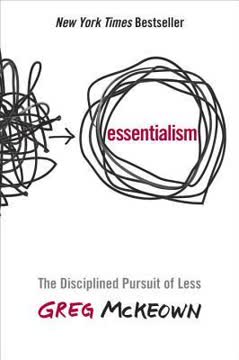重点摘要
1. 非暴力沟通(NVC)是一种慈悲生活的精神实践
“这实际上是一种精神实践,我试图展示一种生活方式。”
NVC的基础。 非暴力沟通植根于精神性,旨在在日常互动中体现爱与慈悲。它不仅仅是沟通技巧,更鼓励实践者与自己和他人的内在神性连接。
实际应用。 NVC包括:
- 诚实地表达自己而不责备或批评
- 同理心地倾听他人的感受和需求
- 提出明确的请求而非要求
- 专注于相互理解和需求满足
通过实践NVC,个人往往会在他们的关系和世界观中经历深刻的转变,从而与他人和自己建立更和谐和充实的联系。
2. 愤怒是未满足需求的信号,而不是惩罚的理由
“愤怒是一种由不自然思维引起的自然感觉。”
重新定义愤怒。 NVC教导愤怒本身并非坏或具有破坏性。相反,它是我们需求未得到满足的宝贵信号。通过认识到这一点,我们可以从责备他人转向识别和解决我们的未满足需求。
处理愤怒的步骤:
- 无评判地识别刺激物
- 认识到引起愤怒的想法
- 连接到潜在的未满足需求
- 清晰地表达感受和需求
- 提出具体请求以满足需求
这种方法将愤怒从一种破坏力量转变为成长和更好沟通的机会,最终带来更满意的关系和结果。
3. 同理心是治愈和和解的基石
“治愈来自同理心。”
同理心的力量。 同理心意味着全然地倾听他人的感受和需求而不加评判或建议。它是治愈个人和集体创伤、促进宽恕和推动和解的强大工具。
通过同理心的治愈阶段:
- 同理连接:全然地面对他人的痛苦
- 哀悼:承认所造成的痛苦而不自责
- 承认过去的需求:理解过去行为背后的动机
- 反向同理:受伤方对造成痛苦的一方表示同理
通过遵循这些阶段,即使是根深蒂固的冲突和创伤也能得到解决,从而在个人和群体之间建立新的联系和理解。
4. 爱通过诚实的自我表达和同理倾听来体现
“对我来说,给予自己意味着诚实地表达此刻我们内心的活力。”
重新定义爱。 NVC认为爱不是一种感觉,而是一种行动。它通过两种主要行为来体现:
- 诚实的自我表达:脆弱而真实地展现自己
- 同理倾听:无评判地接收他人的信息
实际的爱。 这种对爱的理解包括:
- 清晰地表达感受和需求而不责备
- 同理心地倾听他人的感受和需求
- 提出请求而非要求
- 从心出发给予和接受,而不是出于义务
通过实践这些行为,个人可以建立更深层次、更有意义的联系,并体验爱作为一种动态的、持续的过程,而不是静态的情感。
5. 用NVC育儿促进相互尊重和自主性
“我们的意识完全专注于我们的需求。我们意识到我们的需求处于危险之中,但我们绝不暗示孩子有任何不良或错误。”
育儿方法的转变。 NVC鼓励父母远离惩罚性方法,转而关注满足自己和孩子的需求。这种方法尊重孩子的自主性,同时提供明确的界限。
NVC育儿的关键方面:
- 在必要时使用保护性力量而非惩罚性力量
- 清晰地向孩子表达感受和需求
- 同理心地倾听孩子的感受和需求
- 提出请求而非要求
- 避免赞扬和惩罚,转而自然地给予和接受
这种方法培养孩子的内在动机、情商和和平解决冲突的能力,从而带来更和谐的家庭关系和更适应社会的个体。
6. NVC通过有意识的语言和行动促进社会变革
“我希望看到这种能量反映在人们的行动中,他们走出去并有所作为。这是你做的事情,一种实际的精神性。”
积极的精神性。 NVC不是被动的;它鼓励个人积极致力于社会变革。通过改变我们的思维和沟通方式,我们可以在社区和社会中创造重大转变。
NVC在社会变革中的应用:
- 识别和改变暴力的语言和思维模式
- 通过同理心和清晰的沟通解决冲突
- 在谈判中关注需求而非策略
- 创建基于相互尊重和需求满足的系统
通过这些实践,NVC已成功应用于各种环境,从家庭纠纷到国际冲突,展示了其创造持久、积极社会变革的潜力。
7. 连接我们的“挚爱神圣能量”是NVC的本质
“对我来说,这种挚爱神圣能量就是生命,与生命的连接。”
NVC的精神核心。 NVC的核心是与罗森伯格所称的“挚爱神圣能量”——我们自己和他人内在的生命力——连接。这种连接使真正的慈悲沟通和生活成为可能。
神圣能量的体现:
- 在为他人的福祉做贡献中感到喜悦
- 体验深刻的同理心和理解
- 真诚地与他人和自己连接
- 找到满足所有人需求的创造性解决方案
通过专注于这种连接,NVC实践者可以超越文化条件和自我驱动的行为,带来更充实的关系和更慈悲的世界。这种精神维度赋予NVC其变革力量,使其不仅仅是一种沟通技巧,而是一种生活方式。
最后更新日期:
FAQ
What's "Living Nonviolent Communication" about?
- Purpose and Approach: "Living Nonviolent Communication" by Marshall B. Rosenberg is about fostering compassionate communication and understanding in every situation. It provides practical tools to connect with others and communicate effectively without resorting to violence or coercion.
- Core Concept: The book introduces Nonviolent Communication (NVC) as a method to inspire heartfelt connections, allowing everyone's needs to be met through compassionate giving.
- Beyond Communication: NVC is presented not just as a communication model but as a way of being, thinking, and living that emphasizes empathy and understanding.
- Application: The book covers various contexts, including resolving conflicts, improving relationships, managing anger, and parenting, all through the lens of NVC.
Why should I read "Living Nonviolent Communication"?
- Improve Relationships: The book offers insights and tools to enhance personal and professional relationships by fostering empathy and understanding.
- Conflict Resolution: It provides strategies for resolving conflicts peacefully and effectively, which can be applied in diverse situations, from family disputes to international conflicts.
- Personal Growth: Reading the book can lead to personal growth by encouraging self-awareness and a deeper understanding of one's own needs and emotions.
- Practical Tools: The book is filled with practical exercises and real-life examples that make the concepts of NVC accessible and applicable.
What are the key takeaways of "Living Nonviolent Communication"?
- Empathy and Connection: The importance of empathy in connecting with others and understanding their needs is a central theme.
- Observations vs. Evaluations: The book emphasizes the need to distinguish between observations and evaluations to avoid misunderstandings and conflicts.
- Expressing Needs: It teaches how to express one's needs clearly and without judgment, which is crucial for effective communication.
- Requests vs. Demands: Understanding the difference between making requests and demands is vital for fostering cooperation and mutual respect.
How does Marshall B. Rosenberg define Nonviolent Communication?
- Language of Life: Rosenberg describes NVC as a language of life that naturally fosters compassion and connection.
- Four-Part Process: NVC involves a four-part process: observation, feeling, need, and request, which helps in expressing oneself without blame or criticism.
- Focus on Needs: The method focuses on identifying and expressing needs rather than making judgments or criticisms.
- Empathy and Honesty: NVC encourages both empathy for others and honest self-expression to create a harmonious interaction.
How can Nonviolent Communication help in resolving conflicts?
- Empathic Connection: NVC helps establish an empathic connection between conflicting parties, which is crucial for peaceful resolution.
- Understanding Needs: By focusing on the underlying needs of each party, NVC facilitates finding mutually satisfying solutions.
- Avoiding Blame: The method avoids blame and criticism, which can escalate conflicts, and instead promotes understanding and cooperation.
- Practical Steps: The book provides practical steps and examples of how NVC can be applied in various conflict situations, from personal disputes to international tensions.
What is the role of empathy in Nonviolent Communication?
- Core Component: Empathy is a core component of NVC, essential for understanding and connecting with others.
- Presence and Understanding: It involves being fully present and understanding the feelings and needs of others without judgment.
- Healing and Reconciliation: Empathy is crucial for healing past hurts and reconciling differences, as it allows for genuine connection and understanding.
- Empathic Listening: The book emphasizes the importance of empathic listening as a tool for effective communication and conflict resolution.
How does "Living Nonviolent Communication" address anger management?
- Anger as a Gift: The book views anger as a gift that signals unmet needs, rather than something to be suppressed.
- Identifying Needs: It teaches how to identify the needs behind anger and transform it into constructive communication.
- Avoiding Blame: NVC helps avoid blaming others for one's anger, focusing instead on personal needs and feelings.
- Practical Steps: The book provides practical steps for managing anger, including self-reflection and expressing needs clearly.
How can Nonviolent Communication improve parenting?
- Respect and Empathy: NVC encourages parents to communicate with respect and empathy, fostering a nurturing environment.
- Avoiding Coercion: It advises against using punishment or rewards, promoting instead a cooperative and understanding relationship.
- Expressing Needs: Parents learn to express their needs and feelings without making demands, which helps in building trust and respect.
- Empowering Children: The book emphasizes empowering children by involving them in decision-making and respecting their autonomy.
What are some practical exercises from "Living Nonviolent Communication"?
- Role-Playing: The book includes role-playing exercises to practice NVC in various scenarios, enhancing understanding and application.
- Self-Reflection: Exercises encourage self-reflection to identify personal needs and feelings, which is crucial for effective communication.
- Empathic Listening: Practicing empathic listening is a key exercise, helping to improve understanding and connection with others.
- Request Formulation: The book provides exercises for formulating clear and non-demanding requests, which is essential for cooperative interactions.
What are the best quotes from "Living Nonviolent Communication" and what do they mean?
- "NVC is a language of life": This quote emphasizes that NVC is not just a communication tool but a way of living that fosters compassion and connection.
- "Empathy requires presence": It highlights the importance of being fully present and attentive to understand and connect with others genuinely.
- "Anger is a gift": This quote reframes anger as a signal of unmet needs, encouraging constructive reflection and communication.
- "The purpose of NVC is to create connections": It underscores the ultimate goal of NVC, which is to foster meaningful and compassionate connections between people.
How does "Living Nonviolent Communication" relate to spirituality?
- Spiritual Practice: The book presents NVC as a spiritual practice that connects individuals to their inner divinity and the life in others.
- Manifesting Love: NVC is seen as a way to manifest love and compassion in everyday interactions, aligning with spiritual values.
- Connection to Divine Energy: The practice of NVC is described as a means to connect with the Divine Energy within oneself and others.
- Practical Spirituality: The book emphasizes practical spirituality, where actions and communication reflect one's spiritual beliefs and values.
How can "Living Nonviolent Communication" be applied in social change?
- Empathy and Understanding: NVC promotes empathy and understanding, which are crucial for addressing social issues and conflicts.
- Nonviolent Approach: The book advocates for a nonviolent approach to social change, focusing on dialogue and cooperation.
- Empowering Communities: By fostering communication and connection, NVC empowers communities to work together for positive change.
- Global Application: The principles of NVC can be applied globally, as demonstrated by Rosenberg's work in conflict zones and diverse cultural settings.
评论
《非暴力沟通的生活实践》因其实用的方法在改善人际关系和解决冲突方面获得了高度评价。读者们赞赏书中真实的案例和工作坊的对话记录,这些内容使概念变得生动。许多人认为这本书改变了他们的生活,提供了宝贵的同理心和自我意识工具。一些人批评其内容重复性和精神层面的暗示。尽管大多数评论者建议先阅读罗森伯格的基础著作,他们认为这本书是加深对非暴力沟通原则理解和应用的有益伴侣。
Similar Books


















